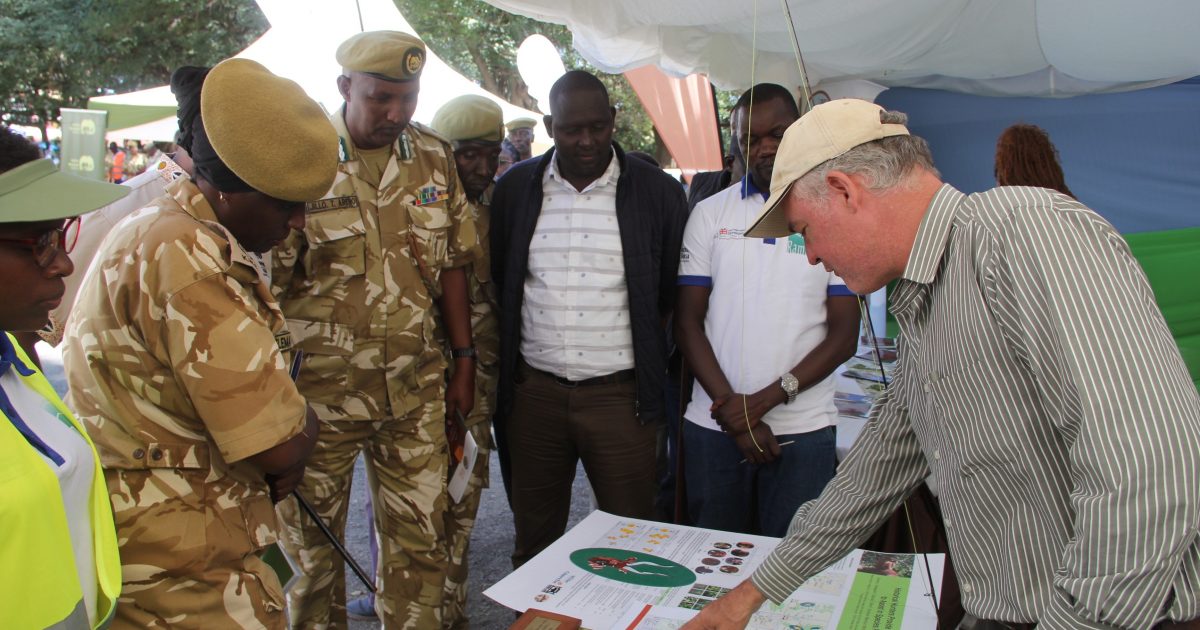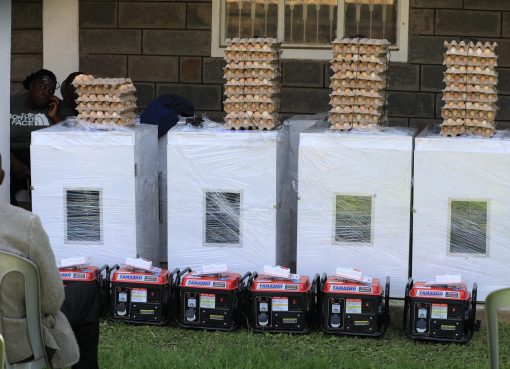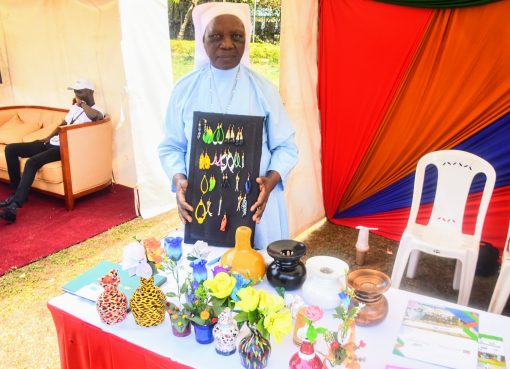Kenya Wildlife Service (KWS) showcased digital innovations to promote wildlife conservation and eradicate human-wildlife conflicts.
The devised technological innovations are crucial in monitoring the movement of animals in the wild, and at the same time help to protect the endangered species from poaching.
The innovative devices which include tagging and collaring, camera traps, Geographic Information Systems (GIS), and remote sensing have helped the government and conservationists to accurately monitor wildlife populations, their behaviors, and movement.
Kenya Wildlife Service (KWS) director in charge of Mt. Kenya region Ellama Hapicha speaking in Nanyuki, Laikipia County during the exhibition on wild animal protection innovations, said that the use of technology in wildlife monitoring had significantly reduced human-wildlife conflict, poaching of endangered species like Mountain Bongo and rhinos.
“As KWS, we embrace the technology so that we can conserve wild animals by using camera traps, collaring and tagging to monitor animals that cause human-wildlife conflict,” said Hapicha, adding that digital technology had enabled them to track and protect the endangered species.
The digital innovation resonates with this year’s World Wildlife Day, ‘Connecting People and Planet: Exploring Digital Innovation in Wildlife Conservation.’ The Amboseli-Chyulu sub-landscape coordinator Dr. John Kioko revealed that the government was exploring an array of digital innovations that were geared towards wildlife conservation aimed at making it easy for wild animals’ protection.
“It’s about digital innovations to conserve wildlife, sharing experiences on different technologies and ensuring they conform, make work easy for the rangers who are taking care of the wildlife,” Sid Dr. Kioko.
Laikipia Community Association CEO Peter Matunge said that, despite the concerted effort by the conservators, they were still facing a myriad of challenges including climate change that had severely affected wildlife and called on for partnership from Kenyans in protecting the wildlife heritage for future generations.
“Despite the benefits that we are getting from wildlife including contribution to the economy in the tourism sector, wildlife are still faced with a lot of challenges that we all need to partner and support the government on conservation,” said Matunge.
On her part, Peregrine Fund Officer Faith Achieng decried that predatory birds were on the decline due to their prey poisoning by humans. The Peregrine Fund is an international organization keen on protecting endangered predatory bird species.
She noted that secretary birds, bateleur eagle, and tawny eagle were critically endangered and hence called for their protection including not cutting down trees.
By Muturi Mwangi





